How I eat soft-boiled eggs (with smörfrallor, always)
A love-letter to mouillettes, salted butter, and that perfect 6-minute yolk
Welcome to The Bakers’ Cottage, a newsletter about recipes, stories, and the quiet rhythm of baking in the north. If you’re new here – thank you for joining. And if you’re already a subscriber, I’m so glad to have you back.
This week’s post is about soft-boiled eggs – always two – and the mouillettes [soldiers] we dip into them. It's about butter left out on the counter, still soft from the day before. A tray of dough rising in the oven. And the comfort of doing things the same way, again and again.
There’s a recipe too – for smörfrallor made with milk, Västerbottensost, and a crackle of seeds. We eat them warm with butter the day they’re baked, and toast the leftovers the next morning for mouillettes.
There are mornings for pancakes, and mornings for porridge. But the best ones begin with a tray of dough, cold from the fridge.
I take it out as soon as I wake up and slide it into the oven – just the light on, no heat – enough to nudge the dough awake while the house is still quiet.
The smörfrallor rise while the kitchen fills with light. Someone lays the table – a creased cloth, butter in a dish, the good glasses for juice. Once the bread is baked – golden and warm, their tops crackling with seeds, the cheese just beginning to melt through – I put on a pan for the eggs.
I always make two for each of us – because I know better. Six minutes, from fridge to pot to egg cup. Nothing fancy, but precise.
There’s a deep comfort in mouillettes. They’re not something I learned – they were always there. A part of the table, and the way we ate soft-boiled eggs. Thin strips of toast, just sturdy enough to hold, just soft enough to soak. The food of childhood mornings – or better still, petit-déjeuner for dinner. But best of all, perhaps, the kind of breakfast eaten slowly, long after the rest of the house has woken.
The bread matters, of course. It can’t be too sour, or with too many holes – pas trop de trous. Sometimes a slice from yesterday’s loaf. Sometimes a fresh roll, toasted while the eggs boil. I’ve made them from sourdough, from soft frallor, even from brioche. But the best are always the simplest – a milk bread, maybe with cheese in the dough and seeds on top.
You toast it lightly – not to a crunch, just until the edges catch – and butter it while it’s still hot.
And it must be buttered.
The butter matters too. Not the kind that tears at the crumb, but soft, extra salted, waiting patiently on the counter. It melts, sinking as it goes. Only then do you cut the mouillettes.
The eggs wait. You tap the shell. Peel it carefully. And there it is, the white just set, the yolk golden and runny.
We each eat them differently. K. spoons his straight from the shell. Sienna dips quickly, with a spoonful of fish roe melting into the yolk. I like mine simple. A sprinkle of herb salt. One dip. Then another.
Although I sometimes give in, and top mine as Sienna does. We often use Kalix löjrom – from Piteå, just north of Skellefteå – but any lightly salted roe will do.
It’s the same, more or less, every time. And that’s part of the comfort. A small ritual that holds our morning together – the dough rising, the butter softening, the water simmering.
I don’t think any of us would call it special – but I notice it, how the table feels full without much on it. And it ends the way it always does, the last mouillette gone, the stove still warm.
Smörfrallor
We bake Petrus Jakobsson´s smörfrallor often – soft, milk-rich dough flecked with Västerbottensost and topped with seeds. Best eaten warm with butter, or toasted the next day and sliced into mouillettes for soft-boiled eggs.
I think that’s what I love most about mouillettes – the way they turn leftover bread into something that feels new. And the way an egg, boiled just right, becomes the kind of breakfast we can’t forget.
I hope they will find a place at your table.
Soft-boiled eggs, our way
Take the eggs straight from the fridge and lower them gently into boiling water.
Six minutes exactly. Set a timer, no exceptions.
When the time is up, run them under cold water just long enough to stop the cooking – not long enough to cool them.
Tap, peel the top, sprinkle salt, and dip.
Notes
On fresh yeast
I work exclusively with fresh yeast, a staple in every supermarket in Sweden.
If using instant yeast instead, use about one-third the amount:
25 g fresh yeast = 8 g instant yeast (about 2½ tsp).
On freezing the unbaked rolls
This recipe makes 18–20 smörfrallor, more than we can ever eat in one go. So I make the full batch about once a month, freeze the raw rolls, and take out a few to proof each weekend.
Once shaped and topped with seeds, I freeze them directly on a tray. When solid, I transfer them to a freezer bag or container. In the evening, I take out however many I need – usually six – and place them on a lined tray in the fridge overnight.
In the morning, I proof them in the oven with just the light on (no heat) for about 1 hour, until puffy and soft to the touch. Then bake as usual.
On retarding
If you want to break up the process, you can retard the dough after shaping. Once the rolls are shaped, glazed, and topped with seeds, place the tray in the freezer for 1 hour to stop fermentation. Then cover well and transfer to the fridge overnight.
In the morning, place the tray in a cold oven with just the light on (no heat) for about 1 hour, or until noticeably risen and soft to the touch. Then bake as usual.
This is my favourite way to prepare them when I want warm rolls for breakfast with minimal effort in the morning.
On seeds
Most often, I will use sunflower and linseeds, partly because it is what I have in my cupboard, but I also love poppy seeds, or better yet, poppy seeds + sesame seeds!
MAKES 18–20 butter rolls
Dough
550 g whole milk
75 g rapeseed oil
50 g honey
850 g sifted spelt or plain flour
180 g grated Västerbottensost, Gruyère, Comté or aged cheddar
25 g fresh yeast
15 g fine sea salt
To layer
150 g butter, softened
Topping
1 egg, for brushing
1 tbsp water
A pinch of salt
100 g mixed sunflower and linseeds, or the seeds of your choice (read note above)
Make the dough
In the bowl of a stand mixer fitted with the dough hook, combine the milk, oil, honey, flour, grated cheese, yeast, and salt.
Knead into a soft, elastic dough – about 10–12 minutes.
Cover and let rise at room temperature for about 45 minutes, or until doubled in size.
Layer and shape
On a lightly floured surface, roll the dough into a large rectangle, about 30 × 70 cm.
Spread with the softened butter.
Fold the dough in thirds widthwise, like a letter, so you end up with a long strip 10 x 70 cm.
Then roll it gently to about 10 × 100 cm.
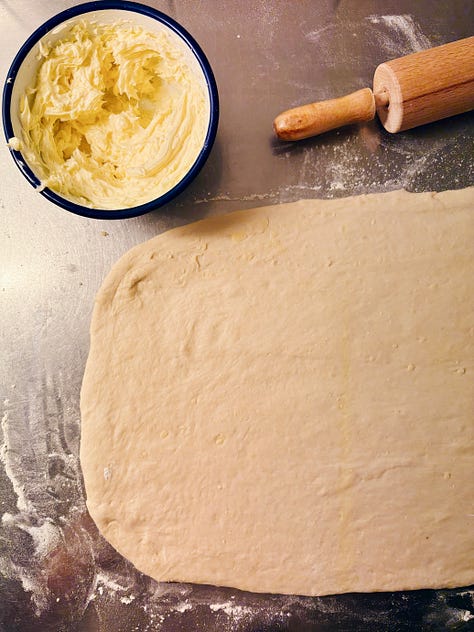

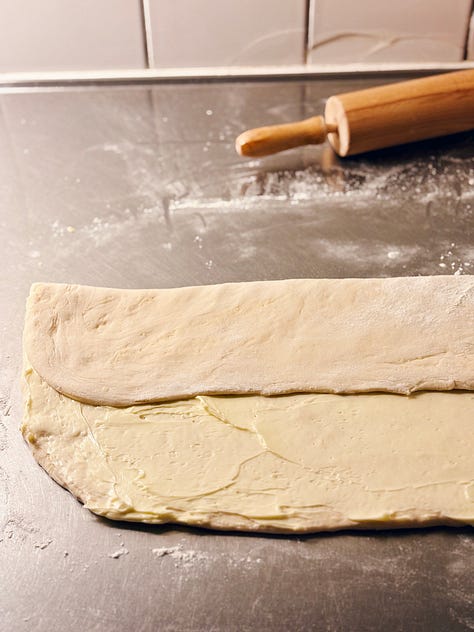
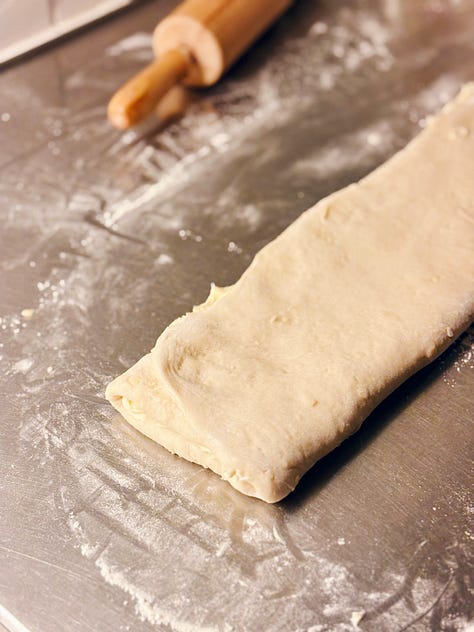
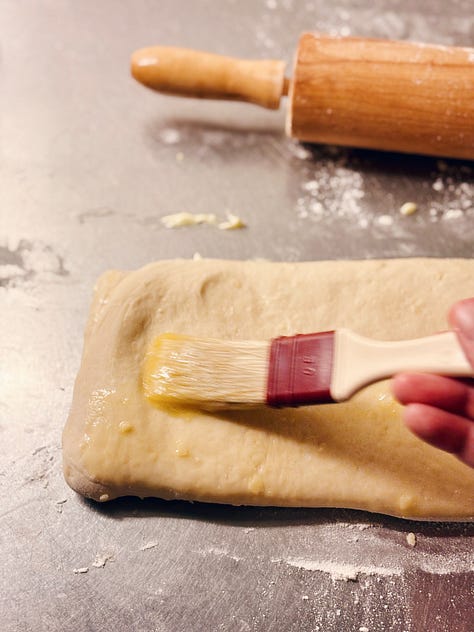
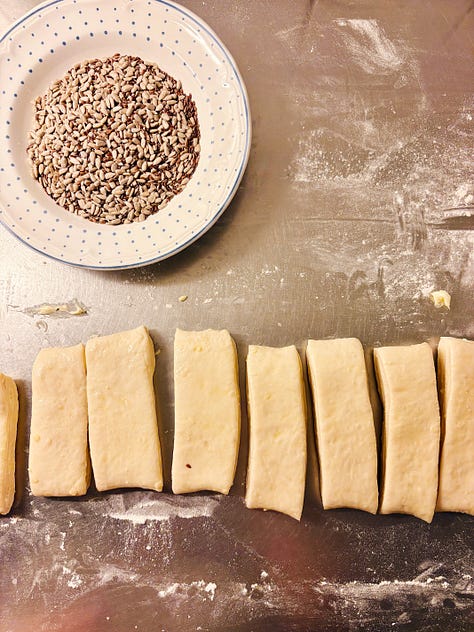

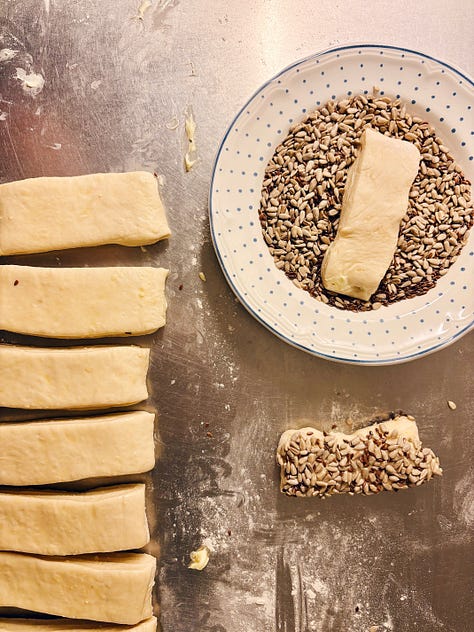
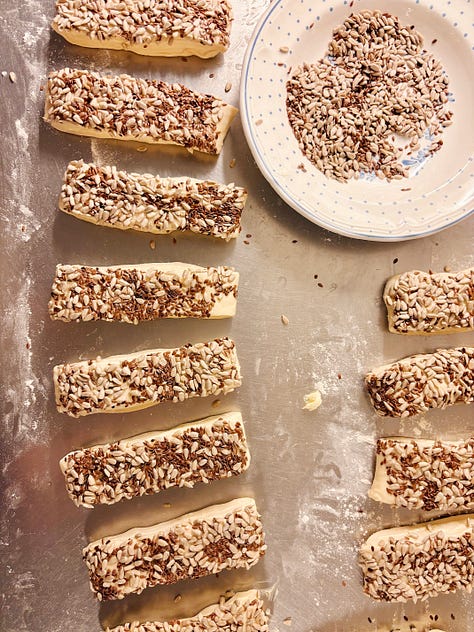
Glaze and bake
Whisk the egg with the water and salt. Brush the top of the dough.
Cut into strips about 5 cm wide, then dip each one, glazed-side down, into the seed mix. Place on parchment-lined baking trays. You can freeze the rolls at this stage (read note above).
You have two options now: bake or retard.
If you’re planning to bake them for breakfast the next day, this is the time to retard (read note above). Place the trays in the freezer for 1 hour, then transfer to the fridge and leave overnight.
The next day, proof and bake as usual.
If baking the same day, let rise, loosely covered, for 1½ hours at room temperature.
Preheat the oven to 230°C / fan 210°C. Bake for 16–18 minutes, or until golden and just starting to colour at the edges.

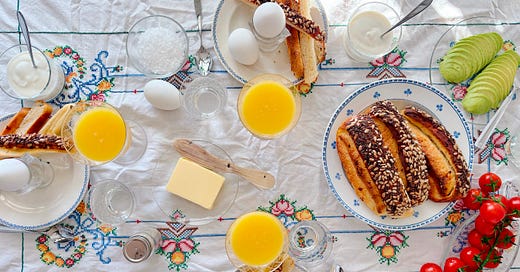



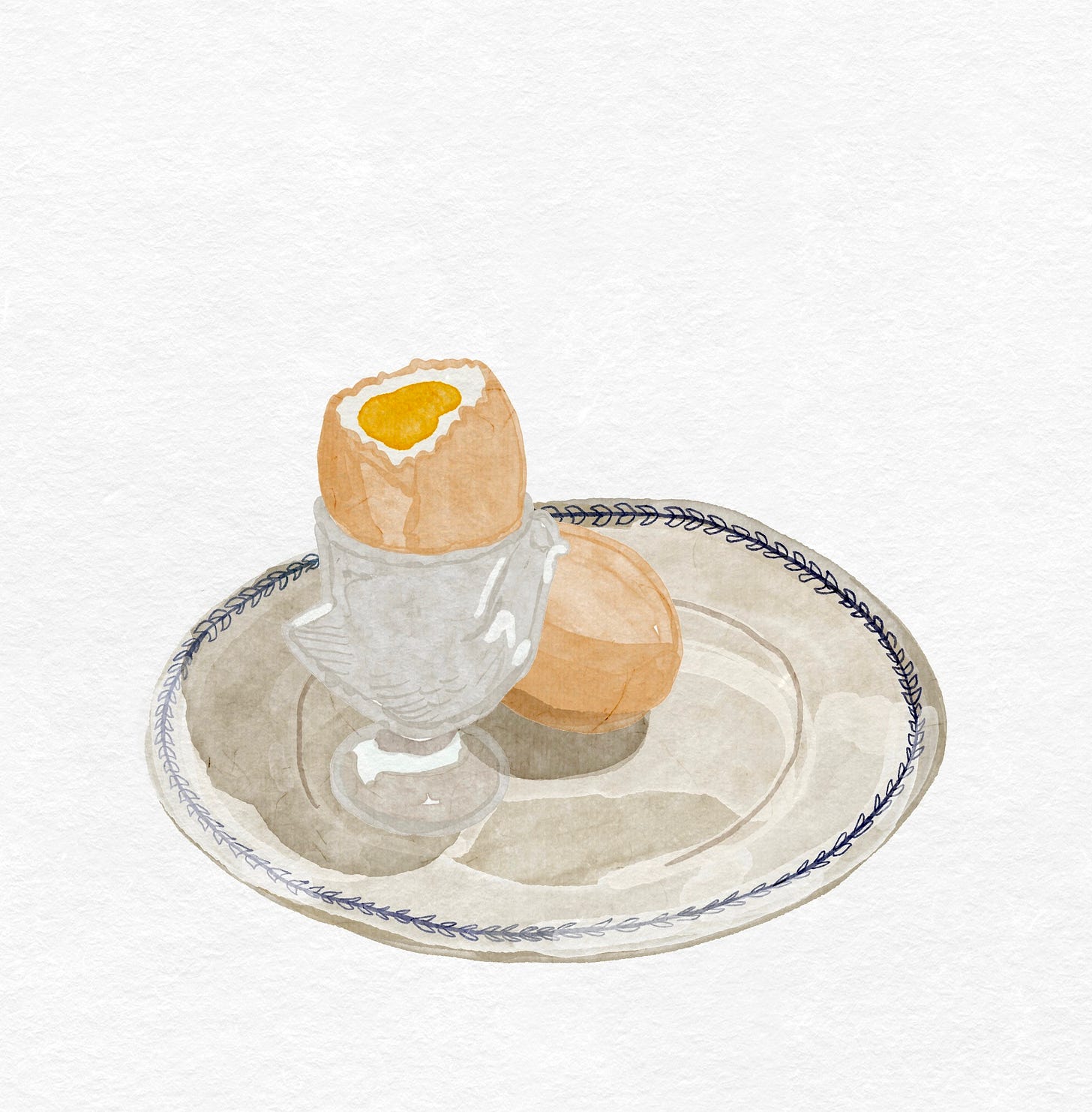
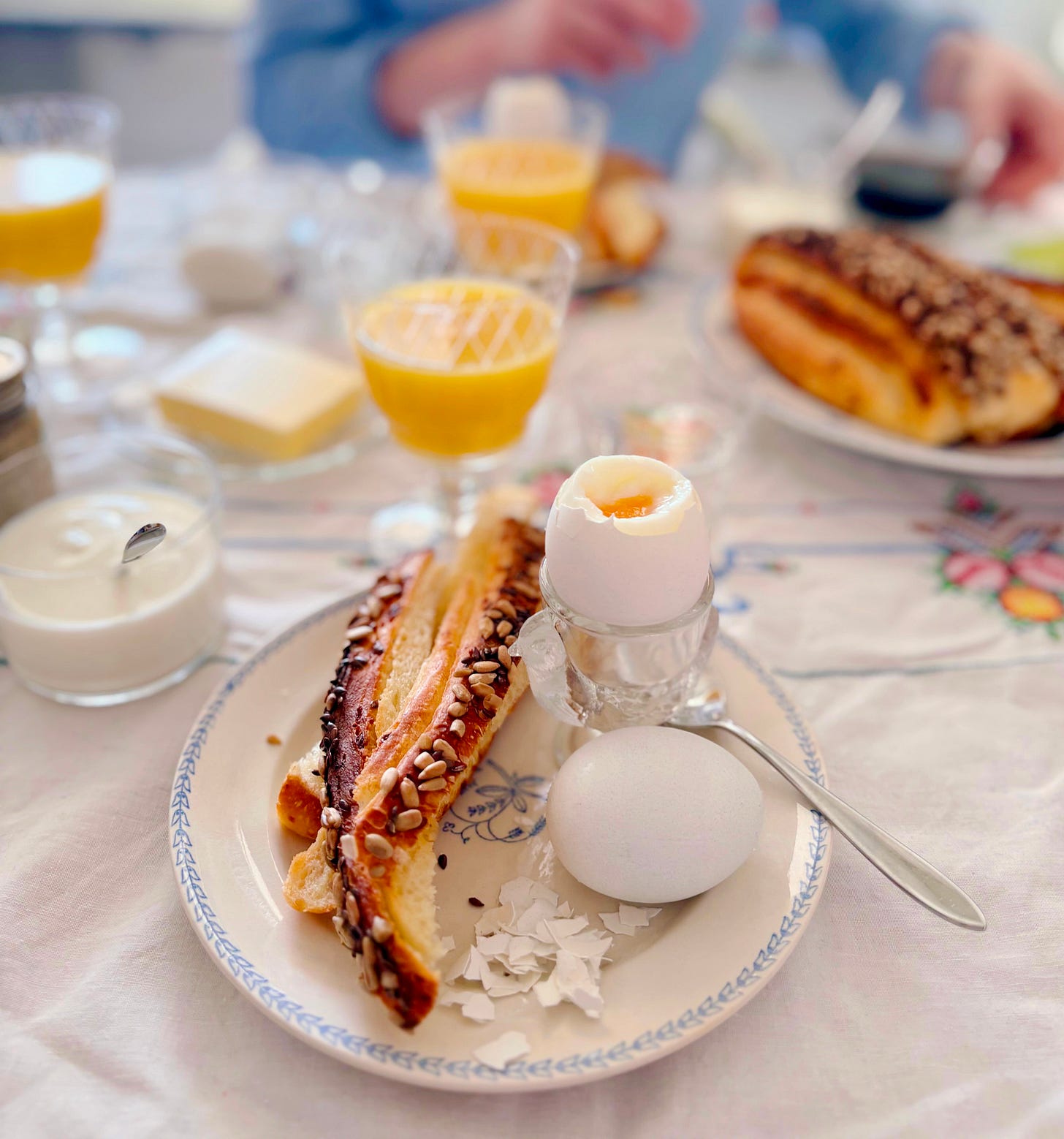


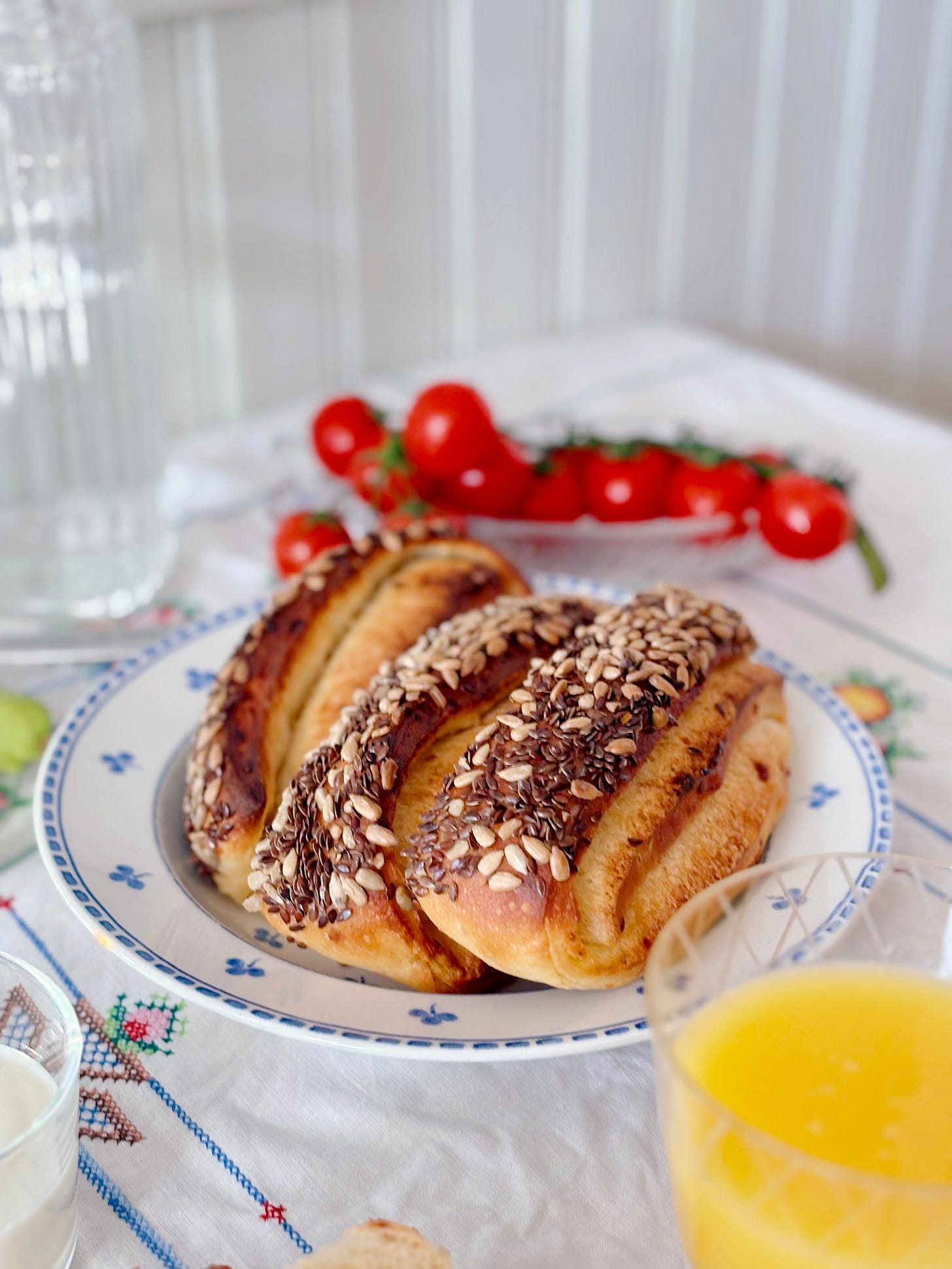
Lovely! Do you have pictures of how to fold the dough?
How delightful to wake up to such a glorious yet simple breakfast 🌹